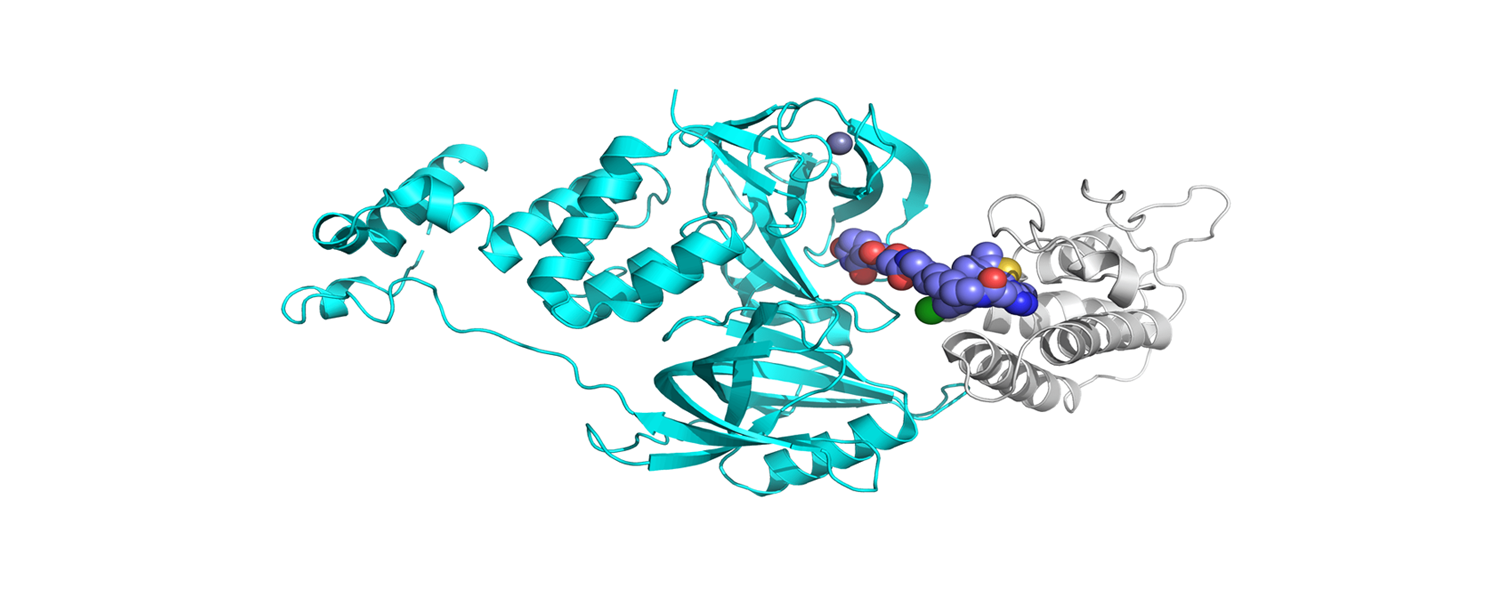5 things you should know about PROTACs
PROTAC® protein degraders (or proteolysis targeting chimeras, to get all formal) are a hot topic at the moment. If you work in drug discovery, chances are you’ve heard all about PROTACs and their potential to revolutionise the industry. They take advantage of the body’s natural waste disposal system by encouraging the ubiquitin proteasome system to mark a target protein for degradation – providing scientists with an intriguing alternative to a small molecule inhibitor or antibody. But aside from the basics and the buzz, what else do you need to know about PROTACs?
A video depiction of dBET6, a PROTAC® targeted degrader, bound in the CRBN-BRD4 complex (6boy.pdb)
1. Pharma is betting big on them
Money is pouring into this exciting and potentially incredibly fruitful field.
In fact, a report published last year claimed that over $5bn had been invested into companies or projects involved in target protein degraders since 2014, with around 26% of these pipeline drugs being PROTACs.
The same report predicts that the compound annual growth rate of the targeted protein degradation market will be around 27% until 2030 – suggesting that the popularity of PROTACs is here to stay.
2. They’re not that new…
PROTACs may have only reached the mainstream recently, but the idea behind them goes back further than you might think.
In fact, the concept originated in the late 1990s, and was first written about in Proceedings of the National Academy of Sciences of the United States of America as long ago as July 2001.
The big breakthrough, so to speak, occurred in 2015, when non-peptidic VHL binders were used as ligands for the E3 enzyme.
3. They’re no one-hit wonder
PROTACs can be recycled and used for subsequent rounds of degradation.
The PROTAC® molecule disassociates from the ubiquitin ligase complex once the target protein has been dispatched to the proteasome, before then attaching itself to a new target and E3 ligase to initiate another catalytic cycle.
In this way, just one single degrader molecule can remove many molecules of a target protein – meaning PROTACs may be potent at relatively low concentrations, therefore potentially reducing the incidence of off-target effects.

A depiction of dBET6, a PROTAC® targeted degrader, bound in the CRBN-BRD4 complex (6boy.pdb)
4. They were considered to fight COVID-19
We’ve seen the successes of widespread vaccination, and several antibody and antiviral treatments have recently been approved for use to protect the pandemic’s more vulnerable patients.
But back in September 2020, an article in Drug Discovery Today proposed PROTACs as a potential method of treating or preventing COVID-19, concluding that “in principle, oral antiviral PROTACs could be used prophylactically to prevent viral infection in addition to therapeutically to promote protein degradation and host immune response in the case of confirmed disease”.
There appears to be uptake of this idea in the industry, with Nurix Therapeutics having announced efforts to generate PROTACs for treatment of COVID-19.
Evidence, perhaps, of the novelty and untapped potential of this class of drug.
5. They’re in the clinic
We’re already seeing PROTACs progress through drug discovery pipelines with promising success.
A targeted protein degrader first reached the clinic in 2019. Soon, many more followed.
By March 2021, in fact, a Nature article claimed that no fewer than 15 deliberately designed degraders were expected to be in clinical trials later that year.
With investment continuing and more PROTAC® projects taking shape, that number is likely to grow significantly in the years ahead.
Want to discuss PROTACs?
Designing a PROTAC® from scratch can present complex challenges. Luckily, our scientists are here to help – get in touch with us via the form below or our contact page.
